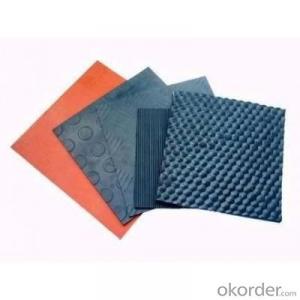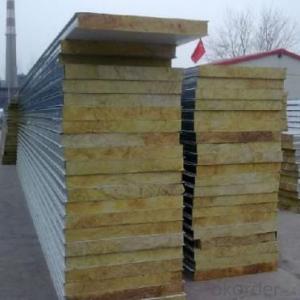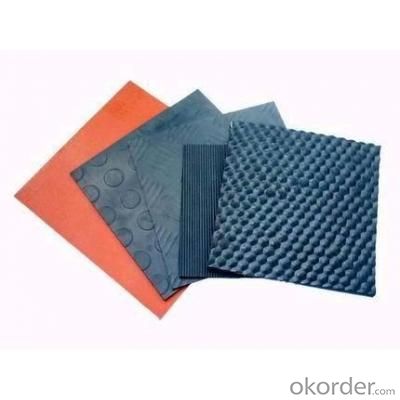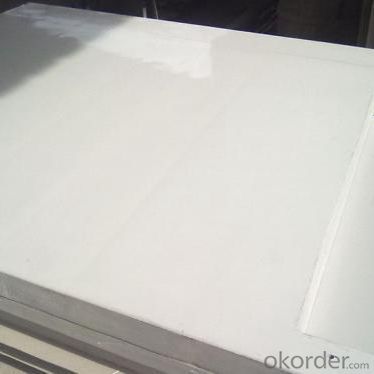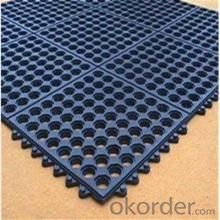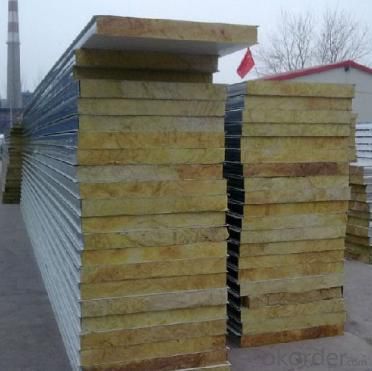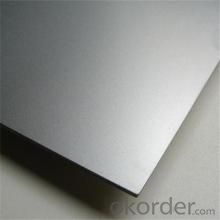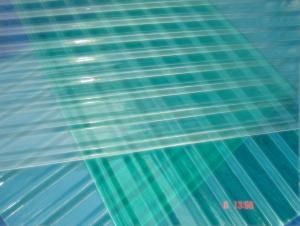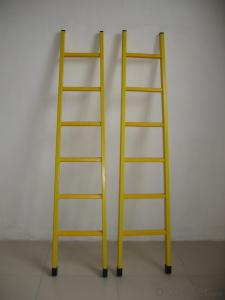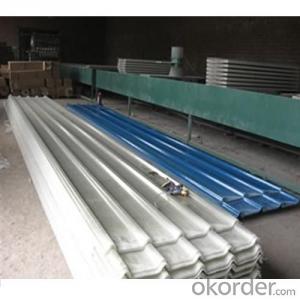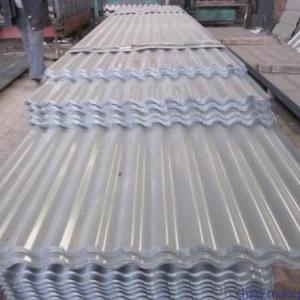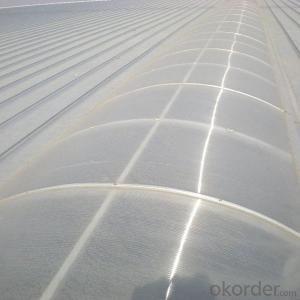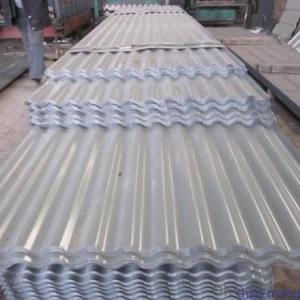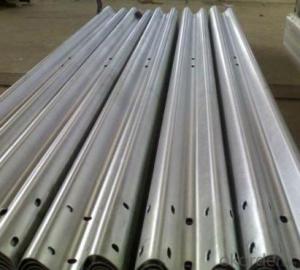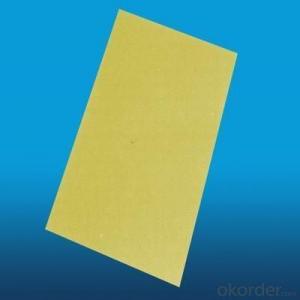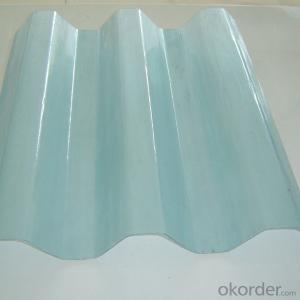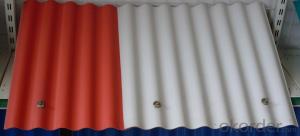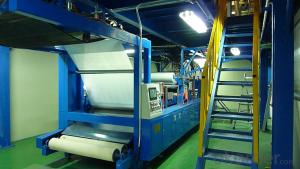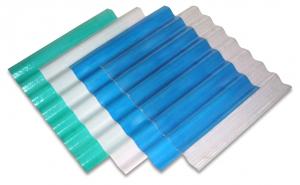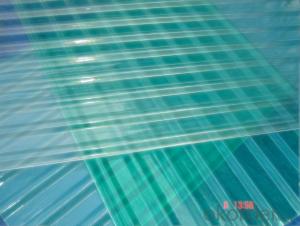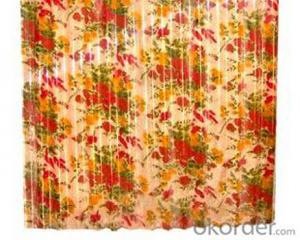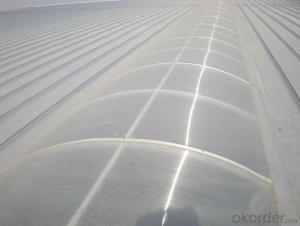FRP Roofing Panel - Corrugated Fiberglass Plastic Roofing Sheet
- Loading Port:
- Tianjin
- Payment Terms:
- TT OR LC
- Min Order Qty:
- 500 m
- Supply Capability:
- 60000 m/month
OKorder Service Pledge
OKorder Financial Service
You Might Also Like
Specification
PRODUCT DESCRIPTION
Equipment is FRP continuous molding machine, unit mix of resin, fiber Wall to Wall thickness control, process regulation, curing, cutting, cleaning consisting of several parts. The production capacity can reach 2,500 meters. The accuracy of the equipment reached the advanced level, while the advanced production technology to ensure product quality and stability.
FRP flooring panel is a big size profile which is made by pultrusion technology and in holistic shape, it could
form a continuours close plane by unique self-lock structure,which could be used as load structures in various
corrosion environments and could replace wood plate, aluminum plate or steel plate etc.
FEATURES
1.Light transmission rate of 80%
2.Anti-aging
3.good corrosion resistance
4.excellent toughness
5.used in -60°c to 100 °c
6.Thickness:0.8-2.5mm
7.length:Customized
8.Excellent water resistance
9.Impact resistance
SPECIFICATIONS
| Name: | Frp Roofing Sheet Corrugated Fiberglass Plastic Roofing |
| Material: | Protective film, Unsaturated resin polyester, Fiberglass |
| Weight: | 1800g/2400g/2750g/3050g Square meter |
| Thickness: | 0.8~3.0mm |
| Length: | Customized |
| Temp: | used in -40°c to 140 °c |
| OEM: | Welcomed |
| Color: | Clear/Blue |
PICTURES
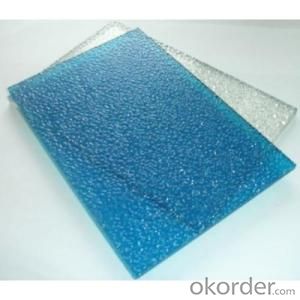
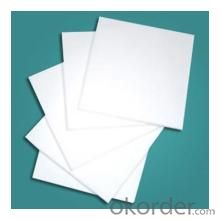

- Q: Are FRP roofing panels suitable for use in coastal areas?
- Coastal areas are well-suited for the use of FRP (Fiberglass Reinforced Plastic) roofing panels. These panels possess a high resistance to corrosion, making them an ideal choice for environments abundant in salt and moisture, such as coastal regions. Specifically engineered to endure severe weather conditions like strong winds, heavy rain, and intense sunlight, FRP panels offer exceptional durability and longevity. In addition to this, they require minimal maintenance, further enhancing their cost-effectiveness for coastal areas. Moreover, their lightweight nature facilitates easier installation and reduces the strain on the building structure. All in all, FRP roofing panels prove to be a trustworthy and fitting option for coastal regions due to their corrosion resistance and ability to withstand the harsh elements of the coast.
- Q: Are FRP roofing panels resistant to hail damage?
- FRP roofing panels are known for their resistance to hail damage. These panels are constructed from a robust and durable material designed to endure various weather conditions, including hailstorms. The composition of FRP panels grants them high resistance to impacts, including hailstones. Nevertheless, it's worth noting that the extent of this resistance may vary depending on the thickness and quality of the panel. Thicker panels generally provide superior protection against hail damage. Additionally, factors such as the size and velocity of the hailstones can also influence the level of resistance. In extreme scenarios, exceptionally large or fast-moving hailstones may still inflict some harm on FRP roofing panels. Therefore, it is advisable to consult with a professional or the manufacturer to ascertain the specific hail resistance capabilities of the FRP panels under consideration for installation.
- Q: Are FRP roofing panels suitable for parking structures?
- Yes, FRP (Fiberglass Reinforced Plastic) roofing panels are suitable for parking structures. FRP roofing panels are known for their durability, lightweight nature, and resistance to corrosion, making them an excellent choice for parking structures. These panels are designed to withstand harsh weather conditions, including heavy rain, snow, and hail, while providing a long-lasting and low-maintenance roofing solution. Moreover, FRP roofing panels offer excellent UV resistance, preventing color fading or degradation over time. This is particularly important in parking structures, where vehicles are often exposed to direct sunlight for extended periods. The UV resistance of FRP panels ensures that the roofing remains aesthetically pleasing and does not require frequent painting or touch-ups. Additionally, FRP roofing panels can be installed quickly and easily due to their lightweight nature. This reduces the construction time and cost associated with parking structure projects. Furthermore, the lightweight feature of FRP panels puts less stress on the building's structure, making them an ideal choice for retrofitting existing parking structures. Another advantage of FRP roofing panels is their ability to be customized to suit specific design requirements. These panels can be manufactured in various profiles, colors, and thicknesses, allowing architects and builders to achieve the desired aesthetic while maintaining functionality and performance. In conclusion, FRP roofing panels are a suitable choice for parking structures due to their durability, lightweight nature, resistance to corrosion, UV resistance, ease of installation, and customization options. These panels provide a long-lasting and low-maintenance roofing solution that can withstand harsh weather conditions, making them an ideal choice for parking structures of all sizes.
- Q: What is the cost of FRP roofing panels compared to other roofing materials?
- The cost of FRP roofing panels is typically lower compared to other roofing materials, such as metal or clay tiles. However, the exact cost may vary depending on factors like the size of the roof, installation complexity, and regional pricing.
- Q: Are FRP roofing panels suitable for residential complexes?
- Residential complexes can indeed utilize FRP (Fiberglass Reinforced Plastic) roofing panels. These panels have gained popularity in residential applications because they offer a multitude of benefits. Firstly, FRP panels are lightweight, making them easy to handle and install. This not only reduces labor costs but also expedites the installation process. Moreover, FRP roofing panels possess high durability and are resistant to various weather conditions. They can endure extreme temperatures, UV radiation, and even hail, ensuring long-lasting protection for residential complexes. Additionally, FRP roofing panels are non-corrosive, which means they will not rust or deteriorate over time. This characteristic is particularly advantageous in coastal areas or regions with high humidity levels. Furthermore, homeowners can choose from a wide range of colors and designs when it comes to FRP panels. This allows them to select a style that complements the overall aesthetics of their residential complex. Another noteworthy advantage of FRP roofing panels is their exceptional insulation properties. By regulating the temperature inside the building, they aid in reducing energy consumption and lowering utility bills. Lastly, compared to other roofing materials such as metal or asphalt, FRP panels are cost-effective. They strike a balance between affordability and performance, making them a practical choice for residential complexes. To sum it up, FRP roofing panels are an ideal option for residential complexes due to their lightweight nature, durability, weather resistance, non-corrosive properties, aesthetic options, insulation capabilities, and cost-effectiveness. These factors establish FRP panels as a reliable and practical roofing solution for residential applications.
- Q: What are FRP roofing panels made of?
- FRP roofing panels, also known as fiberglass reinforced plastic roofing panels, are made of a combination of materials. The primary component is fiberglass, which is a strong and durable material made from fine fibers of glass. These fibers are combined with a thermosetting resin, typically polyester or vinyl ester, to form a reinforced plastic composite. The process of manufacturing FRP roofing panels involves layering the fiberglass and resin mixture onto a mold or sheet. This combination is then cured under heat and pressure to create a solid and rigid panel. The thickness and density of the fiberglass layers can vary depending on the desired strength and insulation properties of the panel. In addition to fiberglass and resin, FRP roofing panels may also contain additives such as UV inhibitors, fire retardants, and color pigments to enhance their performance and aesthetic appeal. These additives help protect the panels from weathering, UV radiation, and fire hazards, making them suitable for outdoor applications. Overall, FRP roofing panels are a popular choice for their lightweight, high strength, and resistance to corrosion, chemicals, and weathering. They are commonly used in industrial, commercial, and agricultural buildings, providing a cost-effective and durable roofing solution.
- Q: Are FRP roofing panels suitable for green roof applications?
- Yes, FRP roofing panels are suitable for green roof applications. FRP panels provide excellent durability, weather resistance, and insulation properties, making them an ideal choice for green roofs. They can also be customized to accommodate drainage systems and support the weight of the vegetation. Additionally, FRP panels offer easy installation and low maintenance, making them a practical option for green roof projects.
- Q: Are FRP roofing panels prone to cracking from heavy loads?
- FRP roofing panels are renowned for their strength and durability, making them less susceptible to cracking under heavy loads compared to alternative roofing materials. However, it is crucial to acknowledge that the resistance to cracking can vary depending on the thickness, quality, and installation technique of the FRP panels. Typically, FRP roofing panels are engineered to endure substantial loads, such as snow accumulation, foot traffic, and occasional impacts. They are crafted utilizing a combination of robust fiberglass reinforcement and a resin matrix, ensuring exceptional structural integrity. This composition effectively distributes the load evenly across the panel's surface, thereby diminishing the likelihood of cracking when confronted with heavy loads. Nonetheless, it is always advisable to adhere to the load-bearing capacities stipulated by the manufacturer. Should the FRP panels be subjected to excessive loads exceeding their intended capacity, there exists the potential for cracking or other forms of structural damage. Thus, it is crucial to ensure proper installation of the panels and equitable distribution of any heavy loads to minimize the occurrence of cracking. Regular inspections and maintenance of the FRP roofing panels are also imperative to identify any indications of wear, damage, or stress that may lead to cracking. Immediate repairs or reinforcements must be carried out upon detecting any issues to prevent further damage and preserve the longevity of the roofing system. In conclusion, although FRP roofing panels generally exhibit reduced susceptibility to cracking under heavy loads, it is essential to consider their specific design, thickness, and installation quality, as well as adhere to load-bearing guidelines to mitigate potential risks.
- Q: Are FRP roofing panels suitable for cold climates?
- Yes, FRP (Fiberglass Reinforced Plastic) roofing panels are suitable for cold climates. FRP panels have excellent thermal insulation properties, which help to maintain a stable and comfortable indoor temperature. They are designed to withstand extreme temperatures, including freezing temperatures, without cracking or warping. Additionally, FRP panels have a high strength-to-weight ratio, making them resistant to heavy snow loads and strong winds commonly found in cold climates. The durable and weather-resistant nature of FRP panels ensures that they can effectively protect the building against the harsh elements. Furthermore, FRP panels are resistant to corrosion and do not absorb moisture, which prevents the growth of mold and mildew in cold and damp conditions. Overall, FRP roofing panels are a reliable and suitable choice for cold climates due to their thermal insulation, strength, and durability.
- Q: Can FRP roofing panels be used for covered sports fields or stadiums?
- Yes, FRP roofing panels can be used for covered sports fields or stadiums. FRP (Fiberglass Reinforced Plastic) roofing panels are known for their durability, strength, and resistance to weather elements, making them a suitable choice for outdoor applications like sports fields or stadiums. These panels are lightweight yet provide excellent structural support, making them ideal for large structures like stadiums. Additionally, FRP roofing panels are available in various colors and can be translucent, allowing natural light to enter the covered area while protecting it from rain, snow, or excessive sunlight. Overall, FRP roofing panels are a reliable and cost-effective option for covering sports fields or stadiums, providing both protection and functionality.
Send your message to us
FRP Roofing Panel - Corrugated Fiberglass Plastic Roofing Sheet
- Loading Port:
- Tianjin
- Payment Terms:
- TT OR LC
- Min Order Qty:
- 500 m
- Supply Capability:
- 60000 m/month
OKorder Service Pledge
OKorder Financial Service
Similar products
Hot products
Hot Searches
Related keywords
